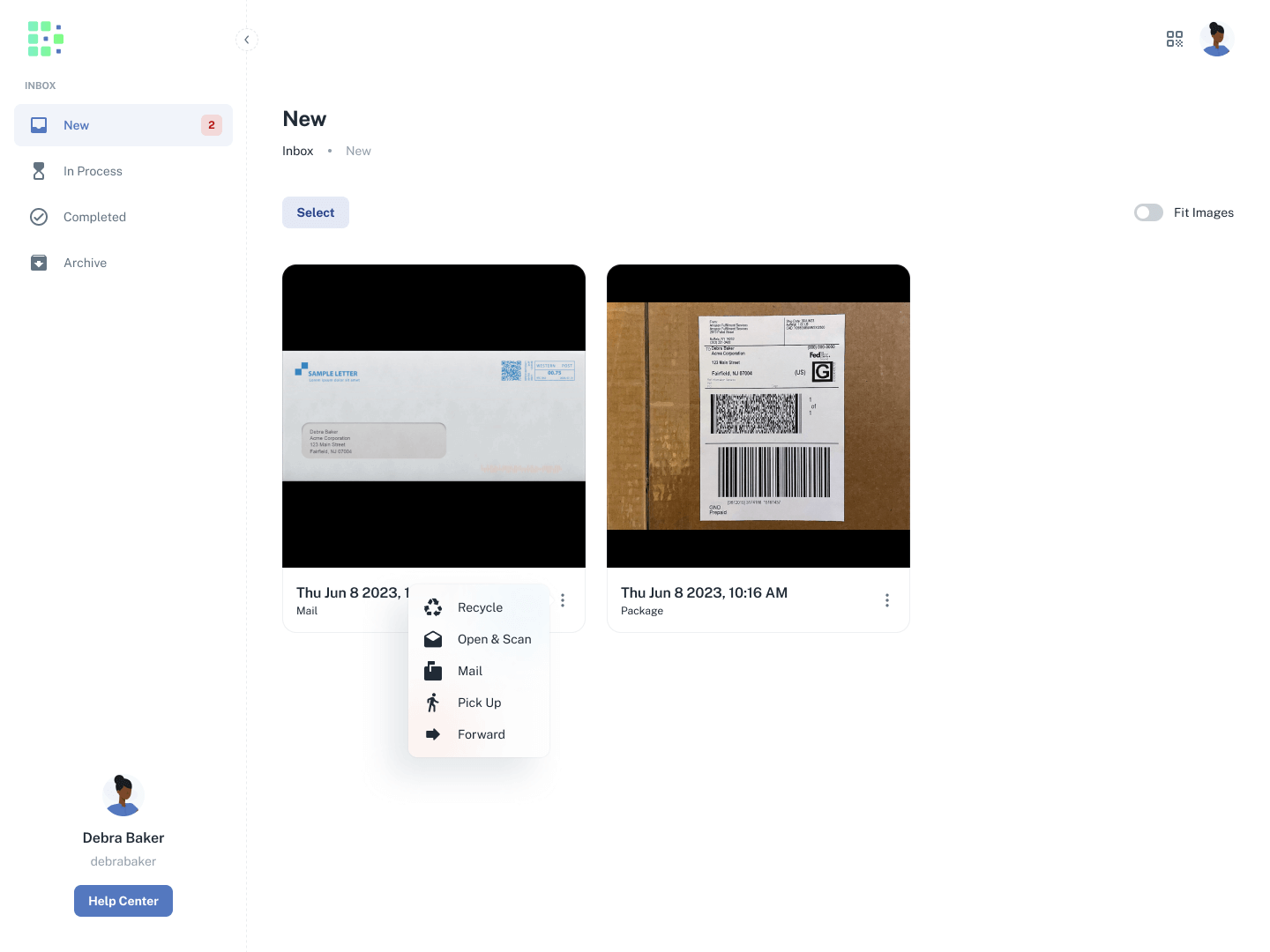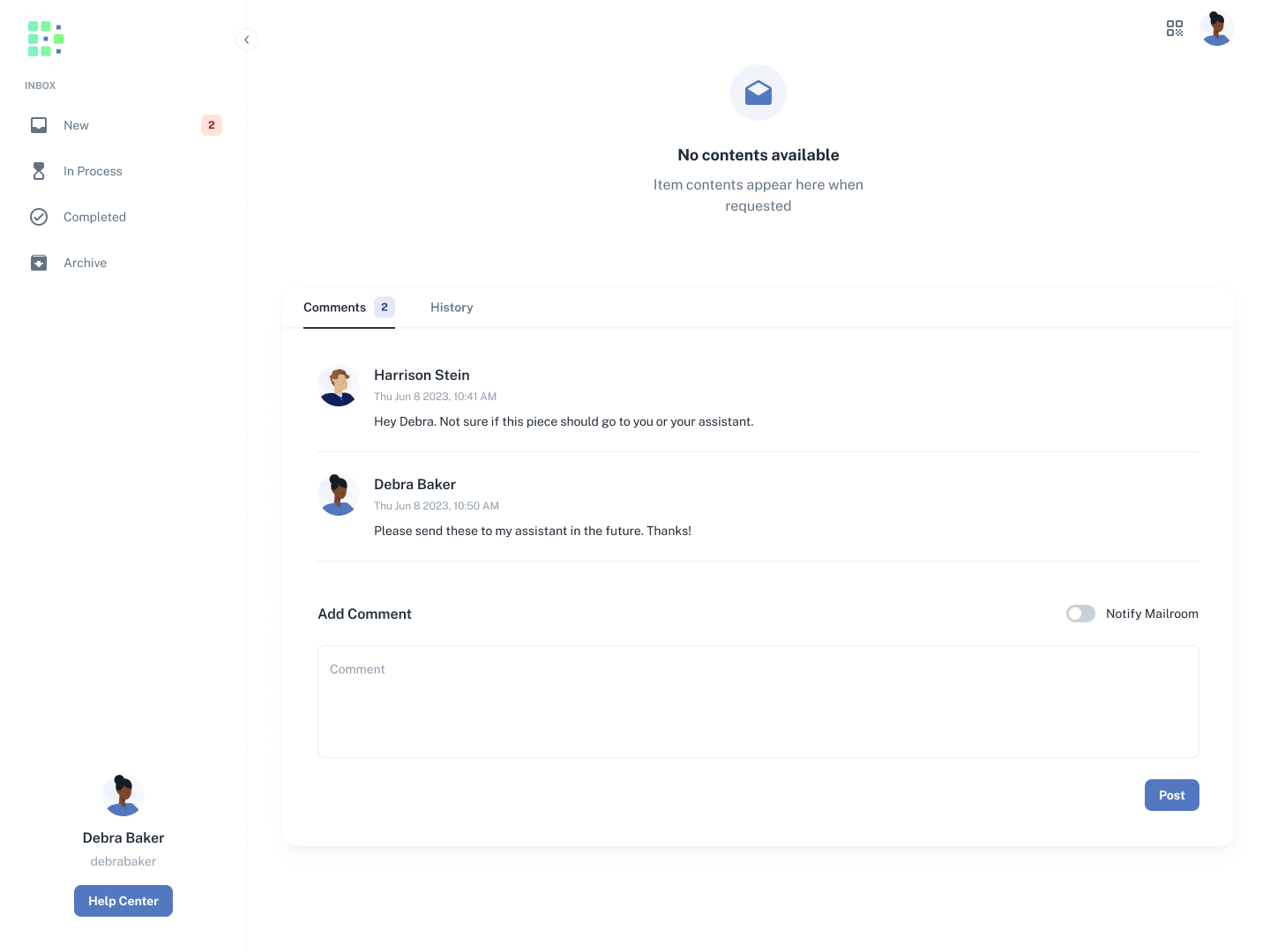Recently, we’ve had numerous conversations with mailroom managers and operators about the most significant challenges they experience when it comes to handling inbound mail and packages. After hours of talking with dozens of mail center professionals, one thing came to the surface despite all of the different perspectives, processes, and expertise: Handling exceptions is a pain.
What are exceptions?
What exactly are exceptions, and how do they disrupt the otherwise smooth flow of mailroom operations? Well, every mail center has a process for inbound mail and packages that generally follows this order: Intake, stage, fulfill, report.
Intake describes the process of receiving new items — receiving them from the carrier and recording their arrival. Stage describes the process of preparing or storing items so they are ready for recipients — storing packages on shelves, placing mail into mailboxes, and so on. Fulfill then refers to the process of getting the item into the hands of the recipient. Finally, report refers to any kind of analysis of trends, item history, or any other metrics relevant to the mailroom’s operations. Of course, every mail center has different variations of each of these steps, but the general process remains the same.
However, along this nice, neat path of intake, stage, fulfill, and report, there is a litany of unexpected hurdles, deviations, and complications that can come up. We call these exceptions.
We’ve found exceptions usually fall into one of these four categories: Recipient exceptions, mailroom exceptions, delivery exceptions, and external exceptions. Here’s an overview of the most common ones we’ve heard about from the conversations we’ve had with mailroom professionals.
Recipient exceptions
Recipient exceptions refer to issues and complications that arise that have something to do with the recipient of the item or the recipient’s information on the item itself.
The most common issue in this category is an incorrect or incomplete address. If the address on the item is incomplete, inaccurate, or outdated, getting the item to the intended recipient becomes much more difficult for the mail center.
There’s also the situation where a recipient has special requirements for how an item should be handled. This can take many different forms. For example, an important piece of mail might be time sensitive, or a package might require specific delivery instructions. To resolve issues like these, mailroom operators usually have to resort to email to facilitate communication with recipients. This type of communication is slow and completely detached from the mailroom’s system for logging items, making the process cumbersome and disconnected.
Lastly, a recipient’s absence can cause problems for the mailroom as well. If someone is on vacation or simply away for an extended period of time for any reason, items are usually left to pile up in the mailroom unaddressed.
Mailroom exceptions
Mailroom exceptions are exceptions that have something to do with the mail center’s process for handling items. While never intentional, non-robust processes are vulnerable to mistakes, even if the mailroom operators aren’t directly at fault.
One easy example of this is misrouted or misplaced items. When mail or packages are misrouted, delivered to the wrong location, or simply misplaced within the mail services facility, it requires additional time to find the item or fix the error and deliver it to the correct recipient.
Another example is a backlog of items in the mailroom. During peak times, such as the beginning of the academic year for universities or holiday seasons, the mail services department may experience a very high volume of inbound items. This is completely outside the control of the mailroom, and, if not prepared, a backlog of items can lead to delays in processing and delivery, causing all kinds of chaos from impatient recipients.
Delivery exceptions
Delivery exceptions are exceptions related to getting the item to its intended recipient. For example, irregular items that come through the mailroom such as perishable goods, hazardous materials, or oversized packages may require special handling.
Other times, the mail center may have to abide by policies set by the organization when handling specific inbound items. Contents such as alcohol may be prohibited in university environments, for example. It’s crucial to adhere to these regulations to ensure safety and compliance.
External exceptions
Finally, the external exceptions category refers to events and issues that arise that are unpredictable and outside of the control of mailroom staff and recipients.
For example, items might arrive damaged, requiring inspection or assessment before being routed to the recipient. Extreme weather conditions or natural disasters may disrupt mail delivery services, causing delays or temporary suspension of operations. Furthermore, communication errors between the carrier, sender, and mail services department can lead to delays in getting items to recipients.
What’s the impact?
Most mail centers have some kind of system in place when it comes to managing inbound items, whether it’s paper and pencil logging, an excel spreadsheet, or a full software solution. Most software solutions are usually pretty effective at standardizing and streamlining the basic process of intake, stage, fulfill, and report. However, where these solutions usually fall short, and where manually logging information doesn’t stand a chance, is with minimizing the impact of exceptions.
Yes, your average tracking system can tell you that your facility received the package, and then an operator delivered it in another building while she was on her route. However, what happens when the recipient calls saying they don’t have the package? Your tracking system tells you it was clearly delivered by an operator, but that doesn’t really solve the issue. It turns out, the recipient recently moved to a new location, and the package in question had the recipient’s old address on it, so that’s where it was delivered.
These are the types of exceptions that then cost the mailroom precious time and resources to resolve. But not only that, your reputation is on the line, even when the exception that occurred might be completely out of your control.
Eliminate the impact by handling exceptions with an interactive platform
Received Digital was built with these complexities of managing inbound items in mind, so it has many more tools to offer mail centers when it comes to resolving the exceptions previously discussed.
First and foremost, in Received Digital, the entire receiving process is centered around imaging items. These images do more than just capture physical evidence of the item when it arrives. They are attached to the notification the recipient receives and can be accessed at any time via their personal, virtual mailbox.
This gives the recipient much more visibility into the process and is incredibly effective at eliminating the possibility for numerous exceptions to have an impact in the first place. When the recipient can see exactly what they’ve received, they’re empowered to be able to act on that item appropriately.
When it comes to communicating requests or special requirements to the mailroom, Received Digital gives both the recipient and the mail center the right tools to facilitate this process seamlessly and maintain a comprehensive history of everything, all within a single system. It starts with the configurable recipient actions. The mailroom can give recipients the ability to request an action to be performed on their item, such as recycle, deliver, or open & scan, right from their virtual mailbox.
For situations that require more communication than just an action request, Received Digital acts as a full-fledged interactive platform for the mailroom and its recipients to communicate. Each item has its own unique comment section associated with it, allowing each party to communicate important info to the other.
Whether it’s the recipient correcting an address error on the item, or the mailroom communicating a unique handling requirement, the use cases are endless. No more sluggish, disconnected communication between the mailroom and its recipients.
Get started today!
If you found yourself nodding in agreement with any of the challenges outlined above, it’s time to explore a solution that goes beyond simply digitizing your old spreadsheet data. If you’re looking for more information, check out How It Works for a more complete overview, or request a demo today and one of our experts can answer any questions you might have.


